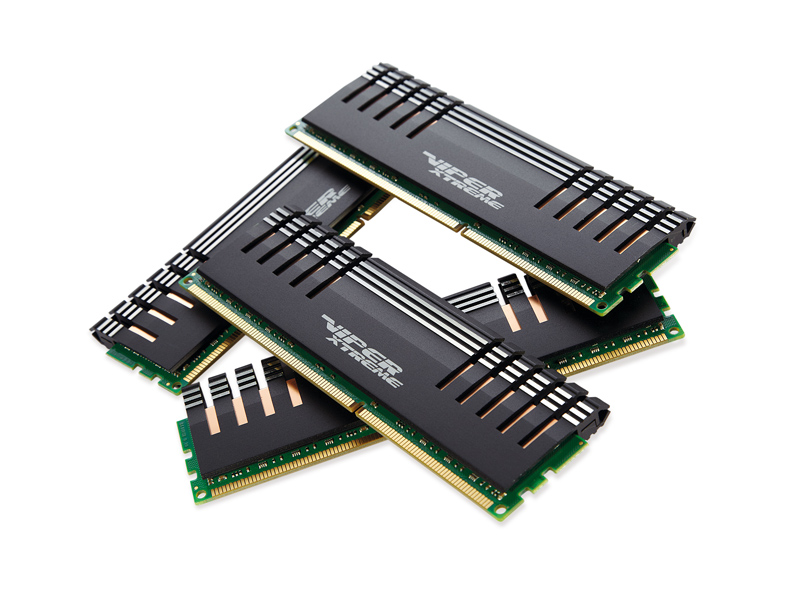TechRadar Verdict
Pros
- +
Excellent value
- +
Good performance
- +
Small amount of overclocking headroom
Cons
- -
Spreader may interfere with large third-party coolers
Why you can trust TechRadar
Cometh the boards, cometh the memory kits. The release of Intel's quad-channel enabling X79 motherboards may have left the simulated ring of cash registers reverberating in the ears of every RAM manufacturer, but it's the ideal time to enable such a high-end feature because DDR3 is so darned affordable right now.
On top of that the sweet spot for quad-channel memory kits is healthy 16GB. Ker-ching. On paper, the Patriot kit appears to be excellent value.
It has opted for a more average 1,600MHz bus speed, helping reduce latencies to the 8-9-8 timings; something it attempts to call 'low latency'. Though we'd prefer to call it 'perfectly normal latency' at this speed.
This quad-channel kit looks suitably impressive, with chunky aluminium heat spreaders that stand 42mm high. These won't interfere with the standard Intel water cooler, but other coolers may struggle - it's worth checking.
A touch of OC
There's no doubting the heritage of the Division 4 memory – Division 4 is inherited from the dual-memory kits called Division 2. The hefty aluminium heat spreader certainly helps make you feel you're getting your money's worth, and does look the business when installed in dual-banks.
As we've noted, the CAS 8 latency can be considered low for DDR3, but it's what we're now expecting for 1,600MHz memory. To achieve this, the DIMMs are running at 1.65 volts rather than the lower 1.5 volts other DDR3 kits have proven capable of. While technically this is less power efficient, that's really not necessarily something that's at the forefront of X79 board owners' minds.
Installation went smoothly and without any issues. Running at 1,600MHz with the XMP profile provided flawless results. On a comparative performance level, the Patriot memory matches anything at the same speed.
As for overclocking, we had minor success, though as it's already running at 1.65 volts we weren't expecting too much. On raw frequency increase, it was happy to shift up to 1,700MHz with the same timings. Increasing the memory to 1,866MHz was less of a success, with the CAS requiring a drop to 10, which effectively eliminates any gains in speed. What you gain in frequencies, you then lose to a poorer latency.
TechRadar Labs

Rendering performance
Cinebench R11.5: Index: Higher is better
Viper Extreme Division 4: 11.06
HyperX Genesis: 11.01
Memory bandwidth performance
Sisoft Sandra: Gigabit per second: Higher is better
Viper Extreme Division 4: 40
HyperX Genesis: 49
Gaming performance
World in Conflict: Frames per second: Higher is better
Viper Extreme Division 4: 112
HyperX Genesis: 114
The Patriot Viper Extreme Division 4 PC3-12800 memory kit may be a bit of a mouthful, but it's a great little kit. The biggest win is that it's very competitively priced, and yet its performance is good enough that you won't gain much by paying more, unless you specifically need the highest memory bandwidth possible.
It also helps that they look the part. While there's a little overclocking overhead, it's nothing that can be made use of in reality, and while the 1.65 voltage is not as desirable, these are both ultimately moot points. If you need a new RAM to go along with your new X79 board, then the Patriot kit does the job.
Follow TechRadar Reviews on Twitter: http://twitter.com/techradarreview
